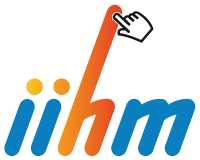The Transfer of Learning as HCI Similarity: Towards an Objective Assessment of the Sensory-Motor Basis of Naturalness
In Proceedings of the international conference on Human factors in computing systems (CHI 2015). pages 1315-1324. 2015.
François Bérard, Amélie Rochet-Capellan
Résumé
Human-computer interaction should be natural. However, the notion of natural is questioned due to a lack of theoretical background and methods to objectively measure the naturalness of a HCI. A frequently cited aspect of natural HCIs is their ability to benefit from knowledge and skills that users develop in their interaction with the real (non-digital) world. Among these skills, sensory-motor abilities are essential to operate many HCIs. This suggests that the transfer of these abilities between physical and digital interactions could be used as an experimental tool to assess the sensory-motor similarity between interactions, and could be considered as an objective measurement of the sensory-motor grounding of naturalness.
In this framework, we introduce a new experimental paradigm inspired by motor learning research to assess sensory-motor similarity, as revealed by the transfer of learning. We tested this paradigm in an empirical study to question the naturalness of three HCIs: direct-touch, mouse pointing and absolute indirect-touch. The study revealed how skill learning transfers from these three digital interactions towards an equivalent physical interaction. We observed strong transfer of skill between direct-touch and physical interaction, but no transfer from the other two interactions. This work provides a first objective assessment of the sensory-motor basis of direct-touch naturalness, and a new empirical path to question HCI similarity and naturalness.

